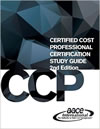All Articles
Accident Investigation & Reconstruction
Intellectual Property
Accident Prevention & Safety
Internet Marketing
Archaeology - Archeology
Investigation & Surveillance
Attorney Fees
Land Use
Audio Forensics
Law Enforcement
Banking
Linguistics
Biokinetics
Machinery
Business Management
Medical Malpractice
Computer Forensics
Medicine
Dental - Dentistry
Mining
Domestic Violence
Neuropsychology
Economics
Plants & Trees
Elevators - Escalator - Automatic Doors
Pools and Spas (Recreational)
Engineering
Product Liability
Engines (Combustion - Diesel)
Professional Malpractice
Exercise & Fitness
Professional Skills
Feng Shui
Psychology
Food & Beverage
Real Estate
Foreign Affairs - Geopolitics
Risk Management
Forensic Analysis
Securities
Forensic Psychiatry
Security
Forgery & Fraud
Sexual Abuse - Molestation - Harassment
Healthcare
Slip, Trip & Fall
Healthcare Facilities - Hospitals
Speech-Language Pathology
Insurance
Telecommunication
More...

EXPERT-WITNESSING-PAGE ARTICLES MAIN PAGE
. Contact Us if you are interested in having your work published on our website and linked to your Profile(s).
All Articles
Addiction Issues & Substance Abuse
Finance
Archaeology - Archeology
Forensic Analysis
Architecture
Healthcare Facilities - Hospitals
Arms - Guns - Weapons
Human Resources
Artificial Intelligence (AI) / Machine Learning (ML)
Hydrology
Bacteria - Fungus - Mold Investigation
Injury
Boating
Insurance
Branding - Brand Management
Insurance Coverage Analysis
Business Consulting
Jails - Prisons - Correctional Facilities
Counseling
Law Enforcement
Crime Scene Investigation
Life Expectancy - Life Care Planning
Criminology
Logistics - Reverse Logistics
Damages
Machinery
Dental - Dentistry
Medical Malpractice
Design
Meditation
Discovery & Electronic Discovery
Nonprofit Organizations
Domestic Violence
Oil & Gas
Dram Shop Liability
OSHA
Elder Abuse
Product Liability
Electrical - Electrocution
Radiology
Engineering
Risk Management
Engines (Combustion - Diesel)
Supply Chain Management
Enterprise Resource Planning (ERP)
Telecommunication
Failure Analysis
Toxicology
Feng Shui
Warnings & Labels
More...
Featured Articles
There are no active articles here at this time. Please use the search bar, try another category, or contact us if you would like to contribute an article.
This Article is unavailable. Contact Us
Search articles by title, description, author etc.
Sort Featured Articles
Featured resources
Silicone Surfactants (Surfactant...
by Randal Hill, PhD
Certified Cost Professional (CCP)...
by Makarand Hastak, PhD, PE, CCP
Outpatient Weight-Loss Surgery: Safe...
by Kent Sasse, MD
Follow us









